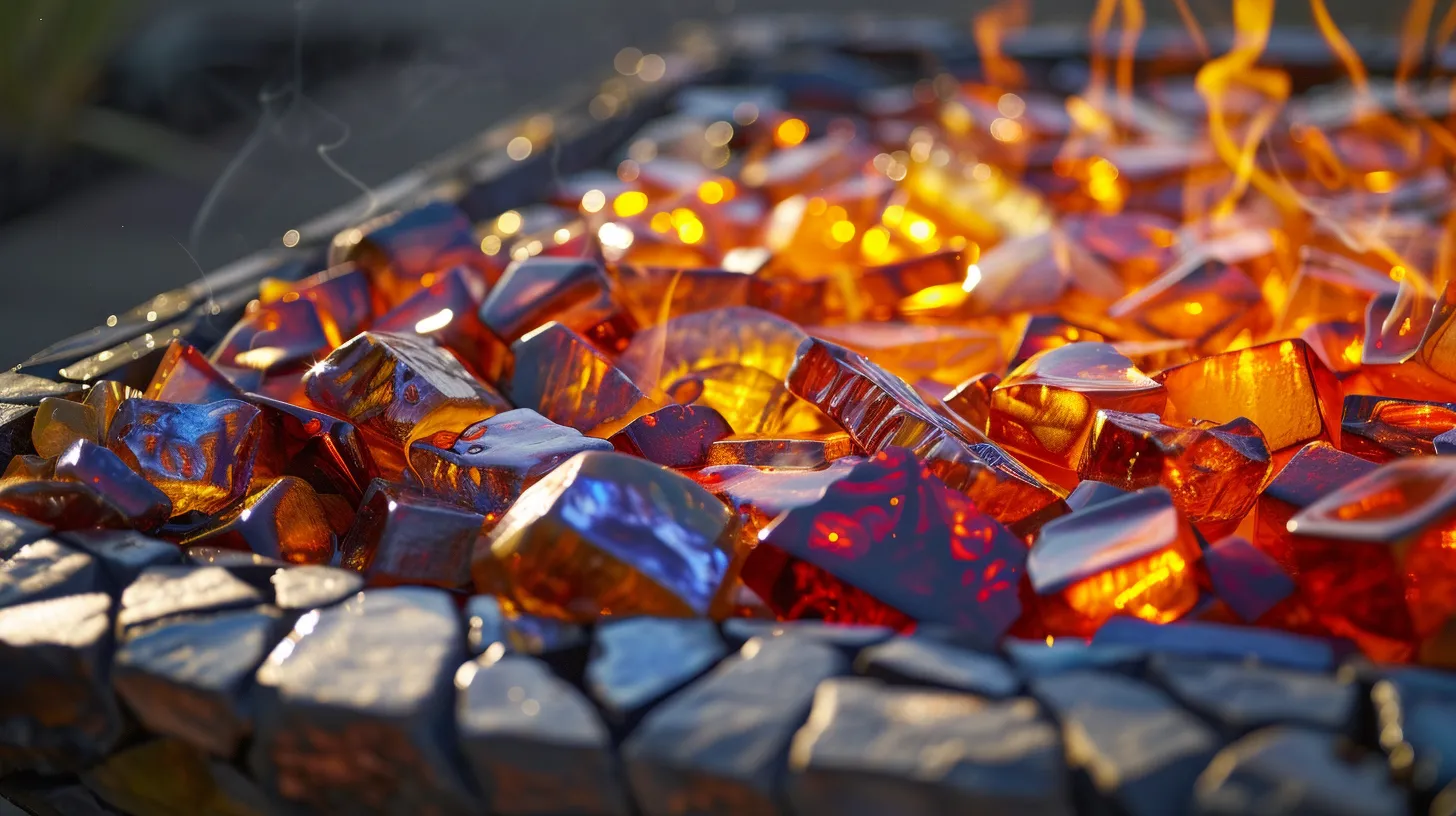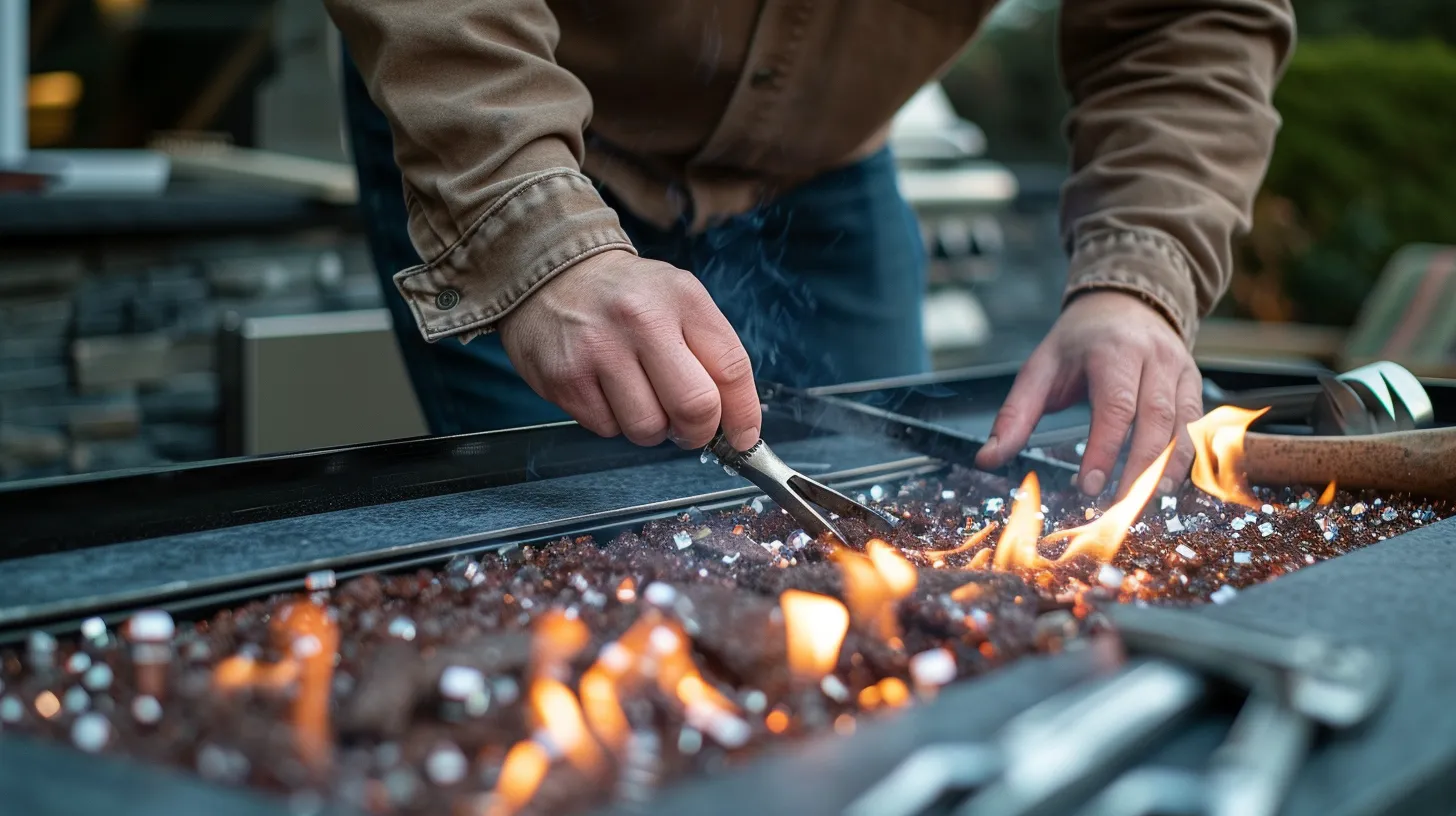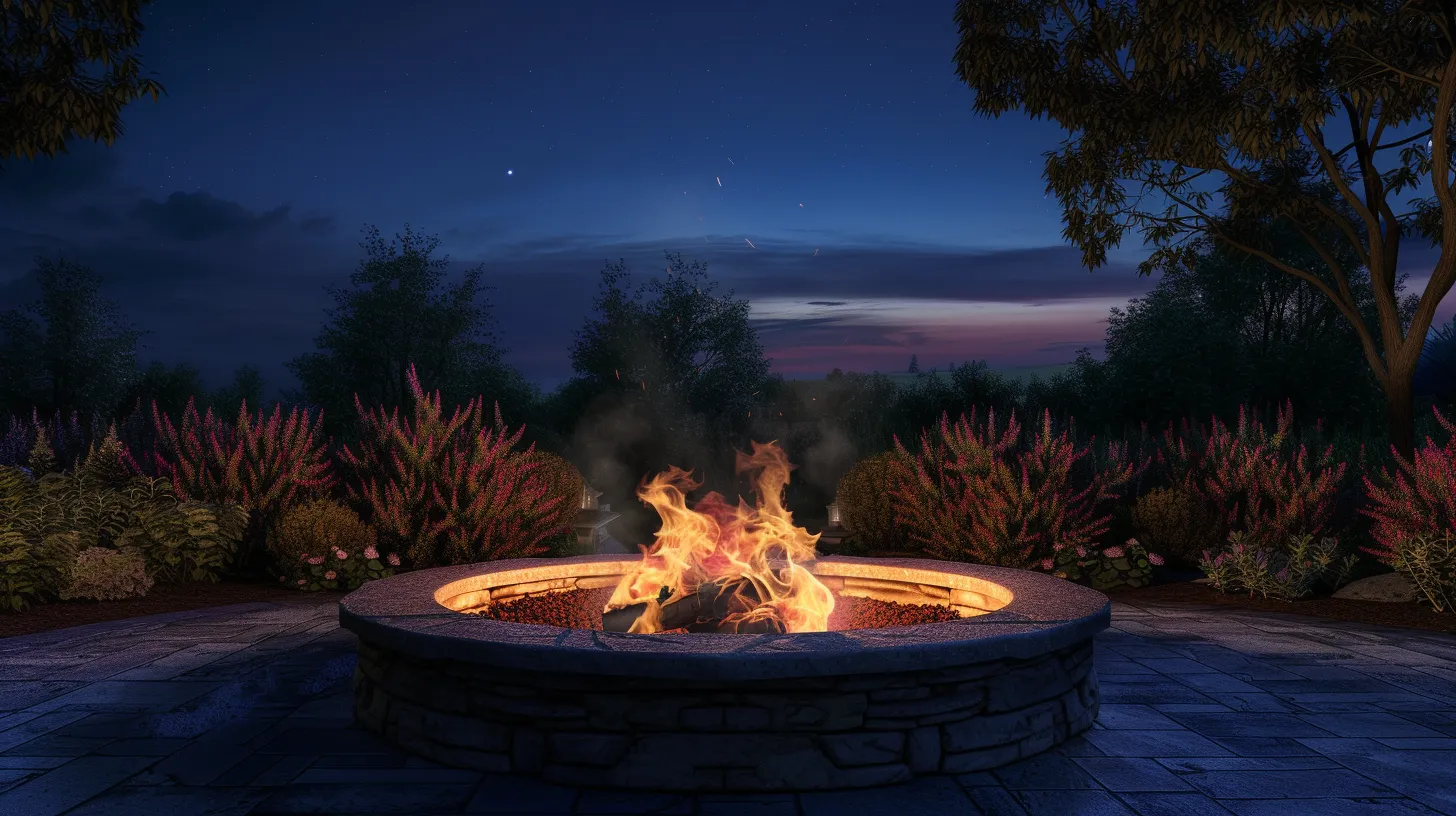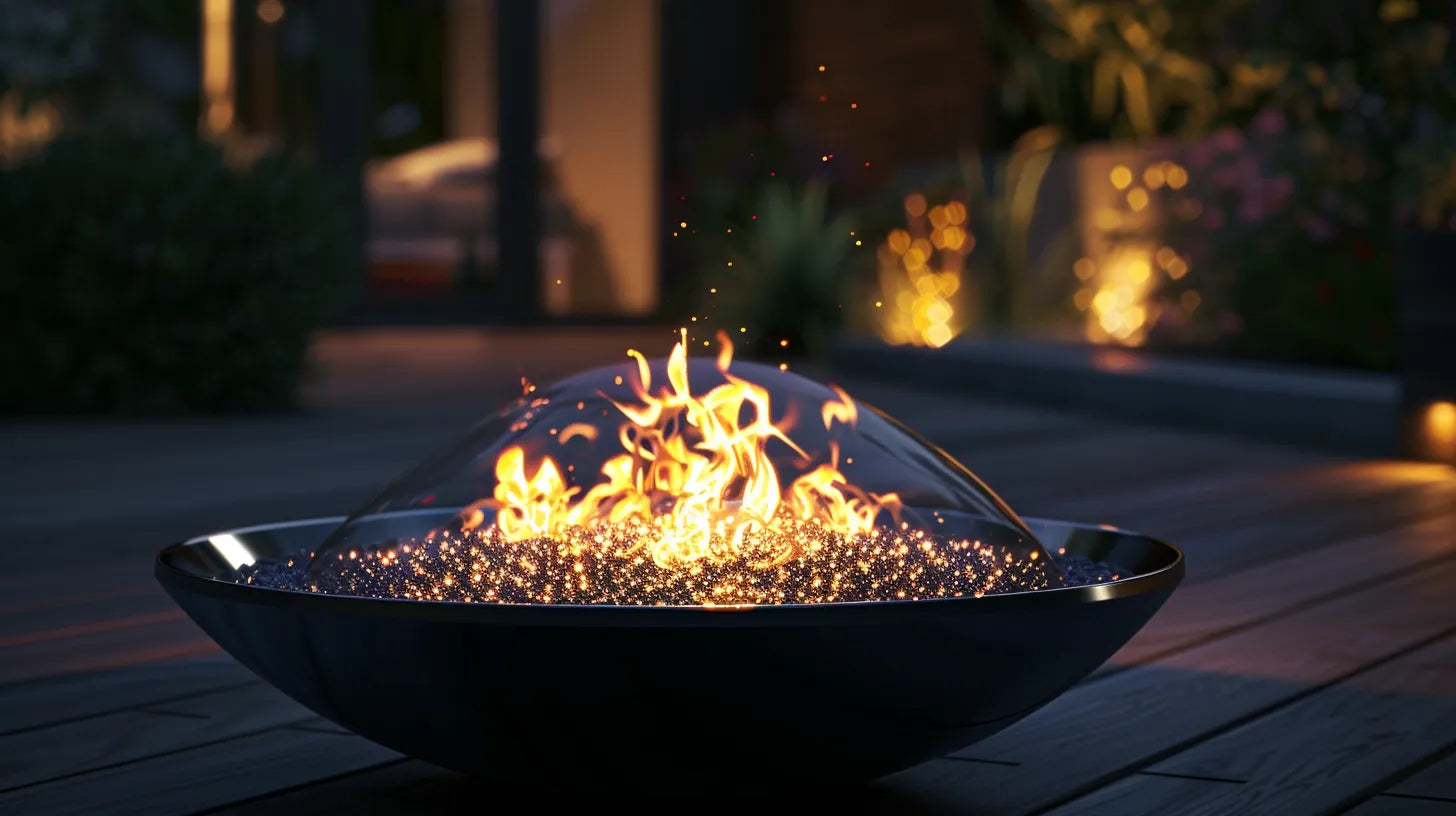The intriguing functionality of fire glass, a material both aesthetically pleasing and practical in its application, merits a closer examination. Engineered to withstand extreme temperatures without succumbing to damage or emitting harmful byproducts, fire glass represents a significant advancement in heating technology.
Its ability to enhance the heat output of gas fireplaces and fire pits while simultaneously providing a captivating visual display of dancing flames through its refractive properties raises important questions. How is fire glass created to endure such conditions, and what are the principles behind its operation?
Furthermore, the installation processes, maintenance requirements, longevity, safety considerations, and environmental impacts associated with fire glass are areas that warrant a detailed exploration. As we peel back the layers to uncover the science and artistry behind fire glass, we invite a thoughtful discussion on its multifaceted contributions to modern heating solutions and outdoor aesthetics.
Fire Glass Basics
Fire glass, a modern and eco-friendly alternative to traditional ceramic gas logs, offers enhanced heat radiation and aesthetic versatility for gas fireplaces and pits. Crafted from specially tempered glass, it can endure direct contact with flames without melting or shattering, making it a safe to use option for both indoor and outdoor fire pits. This innovative material is not only durable but also environmentally friendly, as it is typically made from recycled glass. The unique processing of fire glass ensures that it can withstand extreme temperatures, thereby emitting no toxic fumes and maintaining its integrity over time.
Available in a myriad of colors, fire glass adds a customizable element to gas fire pits, allowing for a personal touch in design while covering gas jets to mimic a natural flame appearance. The types of fire glass vary in shape and size, offering further customization and compatibility with specific gas burners. To ensure optimal performance and longevity, fire glass should be evenly distributed over the burner and requires regular cleaning with warm, soapy water.
With proper maintenance, fire glass can significantly enhance the heat output of your fireplace or pit, making it a practical and visually appealing choice.
Creation Process

Having explored the fundamentals and benefits of fire glass, let us now examine the meticulous process involved in its creation.
The creation of fire glass begins with the selection of type of glass specifically designed for high heat environments. This glass, often recycled, undergoes a tempering process to become tempered glass, which is crucial for its durability and safety. This safety glass is specifically designed to withstand the intense heat of flames without melting or shattering, making it ideal for use in fire pits and fireplaces.
During the creation process, the tempered glass is then treated either chemically or through pressure to enhance its heat-resistant properties further. This ensures that when placed in the burner pan of a fire pit or fireplace, the fire glass can safely sit in flames, increase heat radiation up to four times without melting, and last up to 20 years.
Moreover, fire glass is made available in various shapes and colors, catering to diverse aesthetic preferences and applications, ranging from glass art and home décor to aquariums and mosaic countertops. This versatility, combined with its eco-friendly nature, underscores the thoughtful and intricate process behind the creation of fire glass.
Installation Guidelines

Before embarking on the installation of fire glass, it is imperative to ensure that the gas supply to your fire pit or fireplace is securely turned off and the area has cooled down completely. Proper preparation and adherence to installation guidelines are crucial for the safety and efficiency of your fire feature, whether it's a gas fireplace or an outdoor fire pit.
When installing fire glass, follow these steps for optimal results:
-
Select the Right Burner: Ensure that your fire pit or fireplace is equipped with a burner designed specifically for fire glass. This ensures proper gas distribution and performance, enhancing the efficiency of your fire feature.
-
Calculate the Required Amount: Determine the appropriate amount of fire glass needed for your fire feature. This depends on the size and depth of your fire pit or fireplace. Using tempered fire glass is recommended for its durability and safety.
-
Opt for Natural Gas: If possible, choose natural gas over propane for your fire feature. Propane can cause fire glass to discolor due to residue buildup, whereas natural gas ensures a cleaner burn, keeping your fire glass clean and sparkling.
-
Regular Cleaning: To maintain the aesthetic appeal and functionality of your fire glass, clean it regularly. After shutting off the gas supply and allowing the glass to cool, remove it for washing in warm, soapy water. Avoid using alcohol or chemical-based cleaners to prevent damage.
Following these installation guidelines will help ensure that your fire pits and fireplaces operate safely and efficiently, providing a clean and beautiful fire feature for your enjoyment.
Maintenance and Longevity

After ensuring the correct installation of fire glass, focusing on its maintenance and longevity is crucial for preserving its beauty and functionality over time.
Regular cleaning is paramount, especially considering the environments where fire glass is used, such as in a fire pit with fire glass or gas fireplaces. Washing the glass in a metal strainer using mild soap and warm water not only maintains its sparkling look but also ensures that the fire glass to last as long as possible, potentially up to 20 years with proper care.
Moreover, the process of cleaning allows for the opportunity to switch colors, adding to the aesthetic appeal and versatility of the fire glass.
The heat-treated nature of fire glass ensures it doesn't burn or discolor easily, but attention should be paid to the effects of sunlight exposure, particularly for dark-colored glass which may have a shorter lifespan if exposed to intense sunlight regularly.
Safety and Environmental Impact

Fire glass, a sustainable and safety-conscious choice for fire features, offers an eco-friendly and reliable alternative to traditional burning materials. This innovative solution stands out for its minimal environmental impact and enhanced safety features, making it an ideal choice for both indoor and outdoor fireplaces and fire pits.
Here are four key points to consider regarding the safety and environmental benefits of fire glass:
-
Tempered for Safety : Fire glass is specially tempered to withstand high temperatures without melting or producing sharp edges, reducing the risk of injury.
-
Eco-Friendly Material : Made from recycled glass, it does not emit toxic fumes or smoke when heated, unlike traditional wood burning or gas logs, making it a healthier option for the environment and users.
-
Compatibility with Natural Gas : Designed for use with natural gas fire features, fire glass promotes a cleaner burn, significantly lowering the carbon footprint compared to wood or gas logs.
-
Longevity Reduces Waste : Durable and resistant to high heat, fire glass can last up to 20 years, reducing the need for frequent replacements and lessening waste output.










